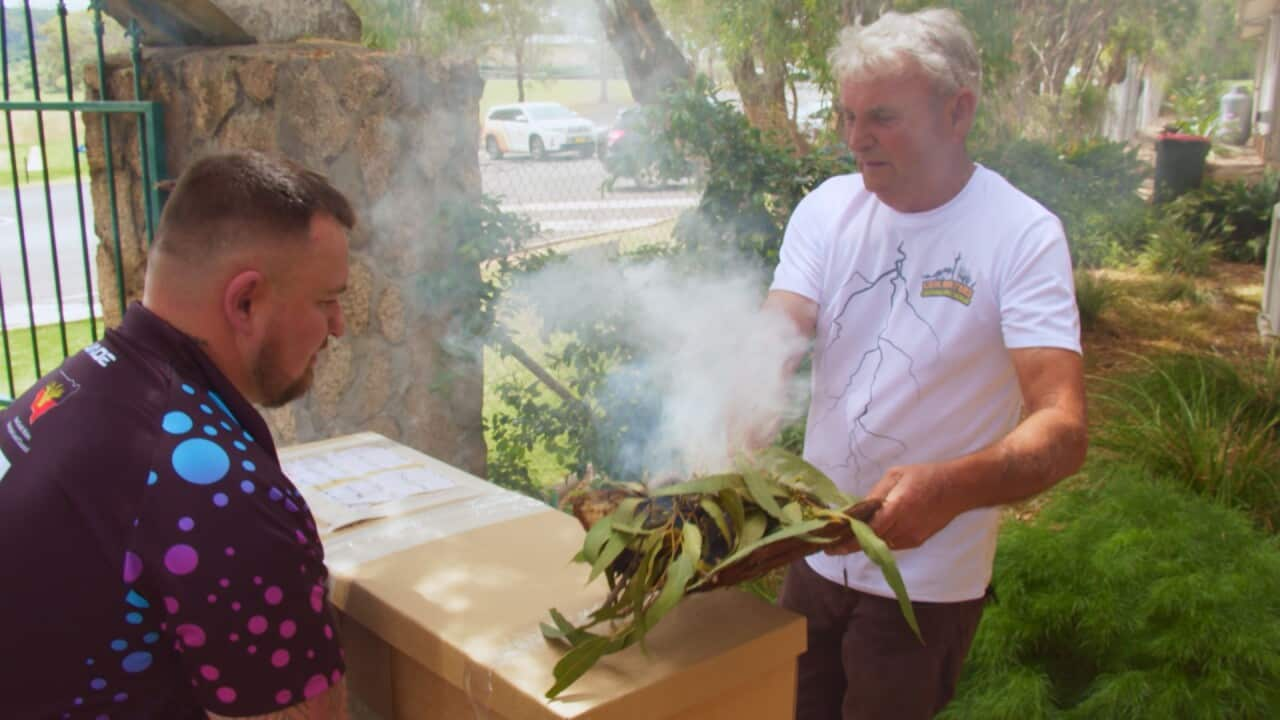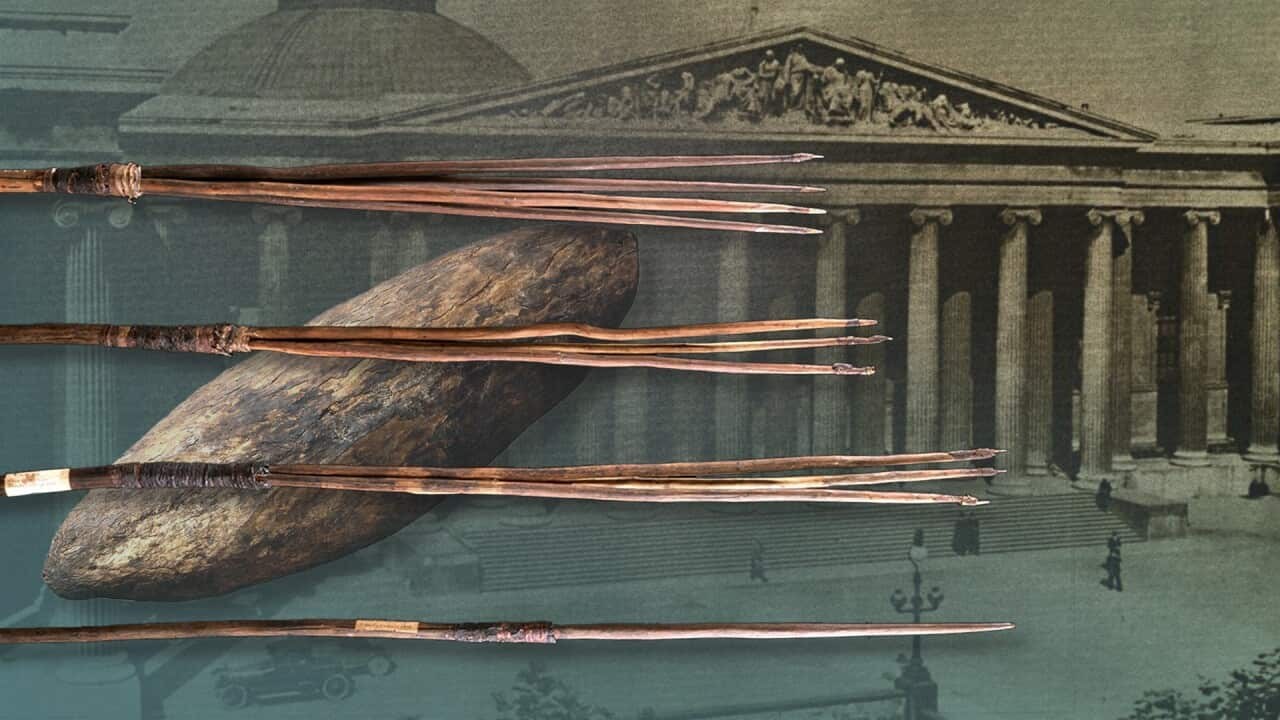For over 34 years Dumbartung Aboriginal Corporation's Kayana gallery has been preserving Aboriginal culture in Perth, as well as educating people about it.
The gallery is located next to Clontarf Aboriginal College in the city's south. It is one of the country's oldest and largest grassroots collections of Aboriginal artwork and sacred artefacts.
A funding grant to house the collection has recently fallen through, and many of the works were recently moved to a storage unit for their protection.
Dumbartung director, Robert Eggington emphasised the significance of the items currently in storage, originating from all over the continent.
“You are surrounded by what is the largest Aboriginal collection of cultural material that comes from right across the spectrum of this country," Mr Eggington told NITV.
"Some of it is really old objects, pre-colonial objects from the south-west [of WA], which are extremely rare.”
Historical, artistic, sacred

Some of the artefacts in the gallery Credit: Photo taken by Kearyn Cox
“I would say there is in excess of 800 pieces of artwork," Mr Egginton said.
"Some are contemporary and some are extremely traditional, they are upon bark that were never meant for sale or tourism. A lot of it is prison art from the prison population and mission art from the Carrolup mission.”
The gallery also holds items from the Kimberley Aboriginal Language and Culture Centre that cannot be seen by the general public.
"The heartbeat is the collection of sacred objects that uninitiated men and or women can't see. I worked with the Kimberley Aboriginal Language and Culture Centre and the Ngaanyatjarra women of the western desert block.
“Dumbartung has over 220 distinctive sacred objects that are so old those ceremonies are no longer practised in this country they are in vaults here.
'Spiritual breaking point'
Mr Eggington says Dumbartung has been working with Lotterywest over the last two and a half years to build the $9.3 million dollar Kayana Bastion truth-telling centre to properly house the collection.
But nothing has ever come easy for Dumbartung, and recently it received a letter from the state's lottery commission for exceeding their budget.
Mr Eggington said it was heartbreaking for the gallery.
“The letter we finally got back from Lotterywest was the real spiritual breaking point... it really was a complete rejection.
"They felt the grant exceeded what their expectations were and yet no expectations were ever put to Dumbartung that we had to keep within a financial framework,” said Mr Eggington.

Robert Eggington outside Dumbartung Kayana gallery Credit: Photo taken by Kearyn Cox
"All grant applications received by Lotterywest are assessed on their own merit and against criteria that demonstrate maximum benefit to the Western Australian community.
"Through the assessment process, Lotterywest concluded, further work was required on scoping out other funding project partners, as well as evidencing total amount requested. The total project cost of more than $9.3 million was entirely directed to Lotterywest for support.
"We will continue to assist the organisation to explore opportunities for future support."
Time running out
Mr Eggington is disappointed that the gallery has found it such a struggle to fund a proper facility for the collection, especially as its value has long been recognised.
"Dumbartung was given a significant assessment award [in 2011]... the significance of the gallery had been identified by prime minister and cabinet and the National Library and Archives as being extremely historically important to all Australia and its peoples."
Mr. Eggington says the collection grows every year and he is running out of room, with some artefacts now destined for suitcases and storage sheds.
He hopes future generations can keep the collection alive.
“We can feel proud of it as our culture and our people and teach our young people their history through this collection.
"It is going in to a form of storage until such times as the next generation or the generation after that can bring it out like a phoenix from the ashes.”













